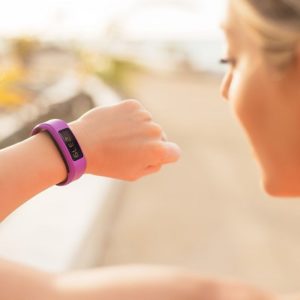 Walking to improve your general fitness, cardiovascular fitness or to lose weight is best done when you hit a target heart rate. This means that your heart is beating a specific number of times based on the percentage of your maximum heart rate.
Walking to improve your general fitness, cardiovascular fitness or to lose weight is best done when you hit a target heart rate. This means that your heart is beating a specific number of times based on the percentage of your maximum heart rate.
It is a mathematical equation that tells you if you are in a fat burning mode, calorie burning mode or just not working hard enough!
Walking monitors make the whole process that much easier. This is because you don’t have to move your fingers around your wrist searching for your pulse while walking with your friends.
Instead, just move your wrist up, like you would to check your watch, and the number is displayed on the monitor you are wearing on your wrist.
This display helps you to stay within the target heart rate range you decided upon before leaving your home to go for your walk. You’ll burn the most amount of calories or do the best cardiovascular workout when you hit those target heart rate ranges. They help you get the most out of your exercise program – and who doesn’t want to get the most out of every moment they spend walking?
There are several different options available in the heart rate monitors on the market today. Use this list of choices to determine which monitor will work best for you.
Activity trackers are used to track the number of steps you take, the distance you travel and the calories you are burning. They can even be used as an alarm clock in the mornings – especially helpful if you travel frequently. These are the newest type of high-tech tracker that can also help monitor your sleep patterns.
Each one is designed to either be worn on your wrist, your waist or dropped in a pocket. The pocket models may work well for men, but most women will find that unless they consistently wear clothing with pockets, it will not be as useful.
These trackers are designed to be used all day, and not just during your workout. They can provide you with some motivational data but may not be as accurate as you would like if you are serious about your heart rate and caloric burn metrics.
Most of the chronographic monitors will also come with a transmitter that fits over your chest to monitor you breathing and heart rates. The basic models will monitor your heart rate, stop watch and possibly a lap timer. Some of the more advanced models will give you lap split timing. As a walker, you are most interested in the heart rate monitoring and possibly the stopwatch to keep track of how long you’ve been walking.
Straight heart rate monitors will give you information in real time on the wrist display. You’ll either have a wireless chest strap or a fingertip sensor. The chest strap may be more accurate, especially for walkers who will not produce so much sweat that the strap slips out of place.
These monitors will give your average, high and low heart rates that you reached during your workout but will not give you basic speed or distance data.
The model that you choose to help monitor your heart rate during your walks should be based on your particular situation and needs. Don’t be tempted to buy something that is more or less than what you need because, in the end, you won’t be satisfied.






